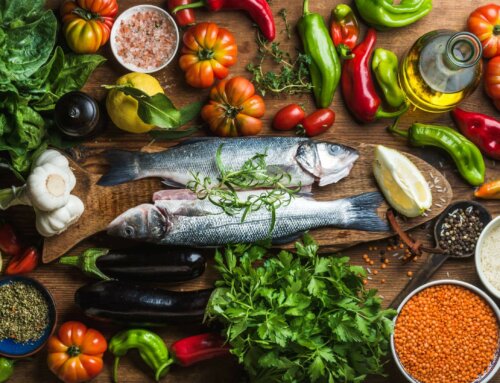“People who are overweight or obese with a BMI over 25 % are more likely to gain weight during the holiday season than those who had a BMI under 25%”. It is known weight gain causes insulin resistance which is already present in people with type 2 diabetes. Another study presented by Cornell University states, “The main driver in obesity is in portion size more than food choices. Although junk food and fast food are unhealthy and should rarely be eaten, they are not the only reasons for the growing problem of obesity in this country”. Weight gain is an issue for everyone, but when you suffer from diabetes it makes it more difficult to maintain controlled blood sugars.
With the holidays approaching, I wanted to review some easy tricks to make this season joyful without the unhealthy weight gain. The typical seasonal weight gain is about 3.5 pounds. Small changes can make an impact on your diabetes control, weight gain and overall health!
My tips:
- Do not save daytime calories. The worst possible way to eat during the holidays is to skip food during the day and wait for the grand meal. People always think the total number of calories matters at the end of the day, but that is not entirely true for those with diabetes. You will be starving and lack any sense of self control at the holiday meal. Blood sugar control will be impossible since you may drop to low levels without eating and then eat too many carbohydrates and calories at one sitting. The best way to manage blood sugars is to eat your regular meals and even include a small snack such as 4 crackers with 2 cheese cubes or 6 baked chips with hummus or low fat dip prior to the holiday meal.
- Start daily food journaling. People tend to think this is unrealistic but usually when you see something in print in makes more of an impact. You can journal in a notebook or use smart phone apps to help you keep records. Documentation can keep you focused on food intake.
- Use colored plates, opaque dishes and serving pieces with designs as opposed to clear glass dish ware. Studies have shown when containers are clear, people eat more from them.
- Recipe substitution. Tweaking family recipes that are heaped in tradition can be the answer to changing high-calorie dishes and out of control blood sugars. Enhance old favorites with newer, light, fresh flavors and healthy options. Start with lighter appetizers and reduce heavy cheese and processed meat platters such as salami, bacon, sausage and pepperoni. Serve dips made with low fat Greek yogurt to substitute for mayonnaise or full fat sour cream. Blanche your vegetables to give them a crunchy texture and serve with salsa made from fresh tomatoes, onions, peppers and seasonings. When serving salads, substitute chick peas, bean sprouts, a handful of walnuts and fresh cranberries for bacon bits, cheddar cheese and croutons. Prepare soups made from chicken broth that is chock full of vegetables and skip the creamy, thick soups. When using cheese, sprinkle small amounts with intense flavor including blue cheese, feta or Parmesan. Avoid full fat selections including Brie. For main courses, use corn starch instead of cream to thicken gravies and sauces. Prepare ham with savory spices instead of glazing with brown sugar or maple syrup. Stuff turkey with citrus including lemons and oranges with fresh garlic instead of corn bread/sausage stuffing. Add lots of flavor by sauteing onions, scallions, leeks and shallots instead of using heavy sauces made with butter and flour. Try to roast, steam, pressure cook, bake, broil or grill, but if you do saute, add one tablespoon of olive oil to cook 4 cups of vegetables or 10 ounces of meat. Use an oil mister instead of pouring oil into the pan. Add broth or cooking wine for moisture to the small amount of oil. Throw in fresh herbs near the end of cooking to keep the most flavor and aroma. Think about adding more spices to your dessert dishes such as clove, nutmeg, cinnamon, apple spice, pumpkin spice, almond or coconut extract instead of sugar. You can substitute unsweetened apple sauce, crushed bananas, crushed pineapple or a sugar substitute including Splenda for regular sugar. Remember that brown sugar, maple syrup, agave and honey will have the same affect as regular sugar. You could use Truvia Baking blend which has “75% fewer calories per serving compared to regular sugar. 1/2 cup of this blend provides the same sweetness as one cup of sugar but offers 570 less calories.” Truvia also makes a brown sugar blend for people who prefer the richer taste. Substitute cocoa powder -70% or higher instead of baking chocolate. Use fat-free evaporated milk instead of cream since it is similar to 2% milk with a creamier taste. Crush nuts or use pieces instead of using whole nuts for the flavor with fewer calories.
- Eat smaller versions of old standbys. If you can’t live without Aunt Alice’s sweet potato casserole dripping in butter, brown sugar and marshmallows, or Uncle Jim’s French bread with chestnuts and sausage stuffing, then take one or two bites. After 2 bites your tastes buds stop recognizing the intense flavors. You could save 500 calories or 25% of the total meal’s calories with cutting back on portions by using a salad plate and not taking seconds. Make sure to add a lean protein and plain steamed vegetables to complete the meal. Eat poultry without the skin and skip the gravy. Keep measuring spoons and cups handy or use them a few times before the main event to understand portions. Consider bringing your own Tupperware container already divided into 3 sections. Fill the largest section with plain vegetables or salad, a 1/3 section for turkey, ham or other protein and a 1/3 for the carbohydrate such as potatoes, stuffing or corn souffle. Do not refill your plate except for protein and vegetables.
- Avoid holiday stressors as much as possible. Time constraints, added responsibilities, dressing up, spending money on gifts, meal planning, decorating the house and company can increase stress levels and dump cortisol into the blood stream raising the blood sugar. People can experience “the holiday blues” and depression from the high expectations of the holiday.
- Slow chewing and other tricks during the meal. Like good hand washing which should take 20 seconds, think about 20 chews per bite. Use a smaller fork and spoon and place utensils down between bites. Talk during the meal to slow down your eating. Sip small amounts of a zero calorie beverage such as sparking flavored bubbly water in a crystal glass throughout the meal. Start with a consomme or broth followed by a salad before you dive into the main course. Eating in courses helps slow you down compared to when the meal is served buffet style.
- Alcohol. If you do not drink alcohol, do not feel that you need to start drinking during the holidays. Avoid fruity alcohol punch or egg nog with alcohol which is sure to be heavy in sugar, fat and calories. Stick to 4-5 ounces of dry red wine, 12 ounces of light beer or 1.5 ounces of hard liquor mixed only with water, seltzer or diet soda. Red wine has antioxidants which may increase insulin sensitivity, lower blood pressure and raise HDL cholesterol. “When a wine is dry there is no residual sugar left after it has fermented”. Dry wine may have a fruity rich flavor without being sweet. There are also dry sparkling wines including Champagne which are labeled Brut or Extra Brut. Remember that alcohol can dehydrate and make you think you are hungrier. Make sure to drink water with the alcohol to stay hydrated. Alcohols initial response is to lower blood sugar so make sure you eat while drinking in moderation.
- Relax with luscious smells. Candles lit around the house can mimic wonderful fragrances like moms baking. You may get your fill of butterscotch, pumpkin, chocolate mint, vanilla or honey bun by burning a candle near the dessert table. If the scents of the outdoors appeals to you more, try a balsam, pine, citrus or lavender candle. Aromatherapy will definitely calm you during the holidays and may revive some wonderful thoughts and memories.
- Substitute. Most desserts are high in carbohydrates and fat. If you decide you need the pumpkin pie or chocolate bread pudding then have a small piece and eat less sweet potato casserole, skip the dinner rolls and stuffing. Drink a hot beverage including decaffeinated tea or coffee in a sweet flavor to keep you away from the desserts. Dunkin Donuts sells zero calorie coffee in chocolate donut or pumpkin spice flavor which tastes delicious!
- After the meal. You can volunteer to help put the leftovers away but remember not to pick. Stand up, move around and clear the table. Sometimes it is better to stay out of the kitchen near the food. Get your mind off eating by excusing yourself and going for a walk. Walking for 20 minutes after a meal will help lower blood sugars and increase insulin sensitivity. Consider a short game of shooting baskets or throwing a football around the yard – anything but sitting.
- Monitor your blood sugars. Keeping a close eye on your blood sugar numbers 2 hours after a meal can give you needed information about food choices and quantity. Try to keep your numbers below 140mg/dl if possible but no higher than 180mg/dl. Take your meter kit with you.
- Nostalgic music. The holidays are more about memories, traditions and rituals than food. Play Christmas songs or any holiday music to conjure up thoughts of the previous years instead of focusing on the desserts. Try upbeat music and dance around the room to burn calories and lower blood sugars.
- Less technology. Enjoy the moment as it happens instead of trying to post everything on your various social media apps. Take old fashioned pictures and keep documentation of life as it happens. Do not carry your phone to the meal. Check your emails and texts later.
- Just enjoy. When all else fails and you blow it just remember to start again the next day. Life is for living. It is never too late to adopt good habits of moderation, exercise and joy.
Happy holiday season!







Leave A Comment